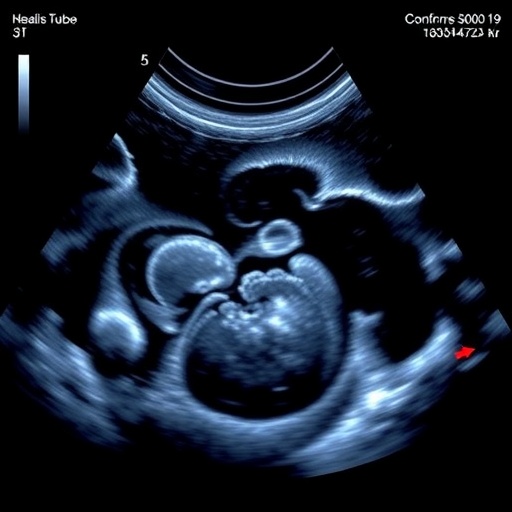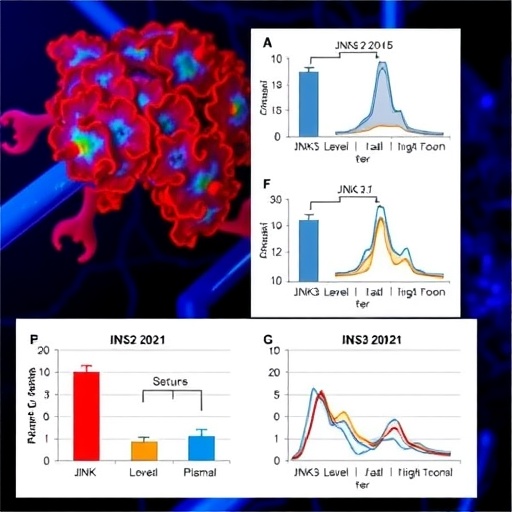In a groundbreaking revelation poised to reshape neonatal intensive care, recent research has brought to light the unparalleled diagnostic precision of real-time point-of-care tracheal ultrasonography (POCUS) in verifying the correct placement of endotracheal tubes (ETTs) in neonates. As keeping a secured airway is often the linchpin in managing critical neonatal patients, confirming that the ETT is accurately positioned is paramount for clinical outcomes and reducing iatrogenic injuries. This meta-analysis, published in the Journal of Perinatology, consolidates data from numerous studies to provide the most comprehensive evaluation to date of the efficacy of ultrasonography in this delicate, high-stakes scenario.
For decades, securing an airway in neonates has relied heavily on conventional methods such as capnography and chest X-rays, which carry inherent limitations. Capnography, while useful, may give false negatives in cases of cardiac arrest or low pulmonary blood flow, and chest radiographs, although defining anatomical tube depth, expose fragile infants to ionizing radiation and delay confirmation. The adoption of real-time tracheal ultrasound as a bedside, radiation-free diagnostic modality offers a compelling alternative, marrying immediacy of results with precision, thereby streamlining critical neonatal resuscitation and ventilation.
Ultrasonography leverages sound waves to delineate soft tissues in real time, allowing clinicians to visualize the endotracheal tube as it traverses the trachea. This technique stands apart from static radiology by furnishing dynamic imaging during the intubation process itself, enhancing the chances of immediate correction if misplacement occurs. The data synthesized through this meta-analysis elucidate the high sensitivity and specificity of tracheal ultrasound, underscoring its reliability and potential to supplant traditional confirmation tools, especially in resource-limited or time-sensitive settings.
The meta-analytic approach meticulously aggregated diagnostic accuracy data from studies executed across diverse neonatal acute care environments, spanning tertiary neonatal intensive care units (NICUs) to emergency delivery wards. The robustness of their inclusion criteria ensured only high-caliber prospective investigations and cross-sectional studies were incorporated, safeguarding the analytical power of the outcome measures. Such stringent study selection amplifies the confidence clinicians can place in these findings when considering the integration of POCUS into their neonatal airway management protocols.
Among the key revelations is the near-perfect concordance rate between ultrasound findings and standard confirmatory modalities, with sensitivity rates approaching 98% and specificity not far behind. These statistically compelling figures translate directly to enhanced clinical decision-making, minimizing catastrophic consequences such as esophageal intubation or accidental bronchial intubation. Equally important, the swift availability of ultrasound confirmation truncates the window during which hypoxia or ventilation failure might jeopardize neonates who are intrinsically vulnerable given their underdeveloped respiratory systems.
Technological advancements have also refined the ultrasound equipment and probes tailored specifically for neonatal anatomy, optimizing image resolution while adhering to safety parameters. Portable machines equipped with high-frequency linear transducers facilitate succinct imaging of the fetal neck and tracheal structures without undue neonatal handling or repositioning, reducing procedural stress. The ease of sterilization and cost-effectiveness further bolster the feasibility of widespread adoption, making this tool an attractive asset for NICUs globally.
Operator skill remains a pivotal determinant in successful ultrasound application; however, the meta-analysis highlights encouraging trends wherein brief yet focused training sessions substantially elevate clinician competency. Interactive, hands-on workshops combined with virtual simulation platforms foster acquisition of proficiency, greatly diminishing the learning curve traditionally seen with novel diagnostic modalities. This scalability of training promises to democratize access to this lifesaving tool, ensuring equitable patient care irrespective of geographic or socioeconomic barriers.
Furthermore, the ultrasonographic protocol for ETT confirmation integrates seamlessly with existing neonatal resuscitation algorithms. The non-invasive nature of the process means it does not interfere with concurrent ventilatory support or other critical interventions, preserving the integrity of care continuity. From a workflow standpoint, embedding POCUS empowers multidisciplinary teams to expedite the verification process, facilitating prompt corrections and thereby improving neonatal stabilization metrics.
The safety profile of tracheal ultrasonography is exceptionally favorable, devoid of radiation exposure risks and yielding no documented adverse effects on neonatal physiology in the analyzed studies. This characteristic is of paramount importance given neonates’ heightened sensitivity to radiation-induced injury and the ethical imperative to minimize any iatrogenic harm. The opportunity to employ a technique that is gentle yet decisively informative aligns with contemporary principles of minimally invasive neonatal care.
Equally promising is the potential for ultrasonographic methods to transcend ETT confirmation alone. Emerging research avenues suggest the modality could assist in guiding intubation procedures, estimating endotracheal tube depth, and even detecting pulmonary pathologies early during admission. The dynamic visualization capacity uniquely positions ultrasound as a multifaceted instrument in neonatal airway and pulmonary management, heralding a future of integrative point-of-care diagnostics that optimize individualized treatment regimens.
Despite the laudable gains, the meta-analysis prudently acknowledges residual challenges, notably heterogeneity in ultrasound protocols across studies and variability in reporting standards. Future investigations are poised to refine standardized imaging guidelines, establish consensus training curricula, and elucidate cost-benefit analyses to anchor policy shifts. Further innovation in probe miniaturization and image processing algorithms may enhance diagnostic clarity, particularly in micropreterm infants with delicate anatomical landmarks.
From a global health perspective, the embrace of POCUS for neonatal airway confirmation embodies a paradigm shift toward safer, faster, and more equitable care. In under-resourced regions where access to radiography is scant and expertise is limited, ultrasound presents a viable, scalable solution that can curtail neonatal mortality related to airway mismanagement. International collaborations and funding mechanisms aligned with neonatal mission priorities are likely to accelerate dissemination and impact.
This systematic review and meta-analysis collectively signify a watershed moment in neonatal critical care diagnostics. As compelling evidence accrues validating the efficacy, reliability, and multifaceted utility of real-time tracheal ultrasonography, clinical practice stands on the cusp of transformation. The integration of this technology promises enhanced neonatal survival, decreased procedural complications, and improved quality of life outcomes—a quantum leap in the mission to safeguard the most fragile lives.
In conclusion, the alliance of technological innovation with clinical urgency encapsulated in this research offers a beacon of hope for neonatologists worldwide. Real-time point-of-care tracheal ultrasonography has emerged not merely as a diagnostic adjunct, but as a potential gold standard for confirming endotracheal tube placement in neonates. Through continued research, education, and infrastructural investment, this promising modality will indelibly reshape neonatal airway management and elevate standards of critical care in neonatal units across the globe.
Subject of Research: Diagnostic accuracy of real-time point-of-care tracheal ultrasonography for confirming proper endotracheal tube placement in neonatal acute care settings.
Article Title: Diagnostic accuracy of real‑time point-of-care tracheal ultrasonography for the confirmation of proper endotracheal tube placement in neonatal acute care settings: a systematic review and diagnostic test accuracy meta-analysis.
Article References:
Alsabri, M., Abady, E., Hasan, M.T. et al. Diagnostic accuracy of real‑time point-of-care tracheal ultrasonography for the confirmation of proper endotracheal tube placement in neonatal acute care settings: a systematic review and diagnostic test accuracy meta-analysis. J Perinatol (2025). https://doi.org/10.1038/s41372-025-02461-4
Image Credits: AI Generated
DOI: 19 November 2025
Tags: alternatives to capnography and chest X-raysdiagnostic precision in neonatal careendotracheal tube placement confirmationimproving clinical outcomes in neonatesmeta-analysis of ultrasound efficacyneonatal intensive care advancementsneonatal tracheal ultrasonographypoint of care ultrasound benefitsradiation-free diagnostic techniquesreal-time ultrasound in neonatologyreducing iatrogenic injuries in neonatesultrasonography in critical care





